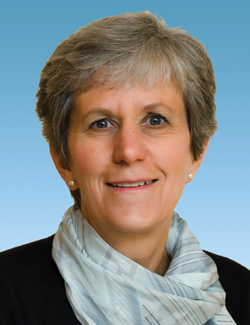It is often an unexpected observation or “backwards” experience that drives progress.
As the summer solstice approaches, at high northern latitudes the sky is bright for the bulk of each diurnal cycle, and it is clear how closely our biological clocks are tied to photon flux. But the sun’s influence goes beyond our notion of when to wake. In the northern winter, the midday sun near the horizon identifies south, and facing it puts east on the left. I was taken aback the first time I noticed the winter sun traversing “backwards,” from right to left, while on sabbatical in Australia. And I was struck by how ingrained patterns and observations can influence our thinking.
It is often an unexpected observation or “backwards” experience that drives progress. One of my early graduate students, needing a method to detect local defects in thin magneto-optic films, realized that a commercial CD player (the first of which had just appeared on the market) might be a useful starting point. The manufacturer had invested many person-years in devising a source with a four-quadrant detector to assure that the laser spot remained in focus; differences in the quadrant signatures were used in a feedback loop to do this. The student put together a circuit that allowed him to sum the outputs, and was then able to make high-resolution, quantitative maps of the coatings’ reflectivity.
That was perhaps the first time that I had seen a sophisticated consumer product (aside from office equipment) move “backwards” to contribute to scientific progress. Since then I’ve seen many devices, developed based on scientific inquiry, that have cycled back into the lab. Imaging equipment has emerged from the digital-photography, webcam and smartphone markets. Among my favorite examples are the thin, cylindrical USB microscopes that can be used for preliminary laser alignment; viewing a computer monitor is a fine alternative to attempting a direct observation and is inherently safe for the optical sensors we are born with.
These unsophisticated cameras are no replacement for dedicated, top-notch detectors, but they facilitate progress. A similar principle applies to “newbies” in the lab: Often, the most naive questions are the most difficult, and trying to find answers forces us to assess our ingrained thought patterns—to ask whether the sun is really rising in the west, as it might appear to be. The ability to ask tough questions, and the drive to answer them, is a common theme for the recipients of OSA’s 2019 awards and medals, highlighted in a special section of this issue of Optics & Photonics News.
Sophisticated sensors also form a key theme of this issue, in sync with the inaugural OSA Optical Sensors and Sensing Congress that will take place at the end of this month in San Jose, California, USA. A cover article by OSA Fellows Nathalie Picqué and Theodor Hänsch of the Max-Planck Institute of Quantum Optics, Germany, looks at the phenomenal recent progress in mid-IR spectroscopic sensing. And a feature by Anthony Dandridge of the U.S. Naval Research Laboratory explores the Navy’s history in developing fiber optic interferometric systems for acoustic sensing at sea.

